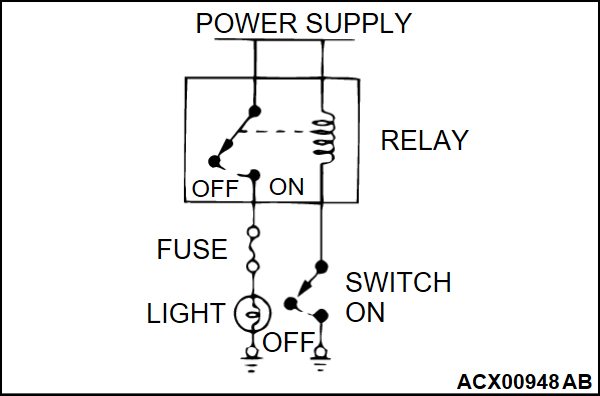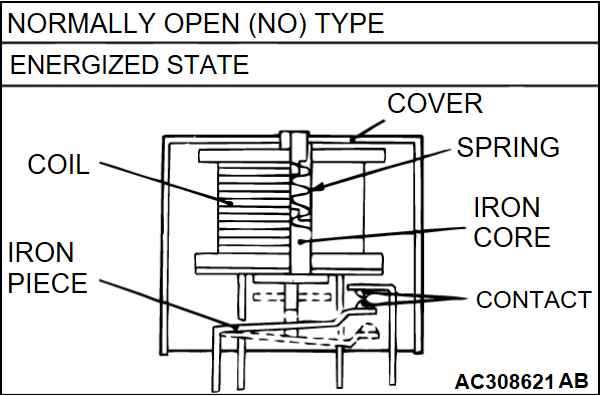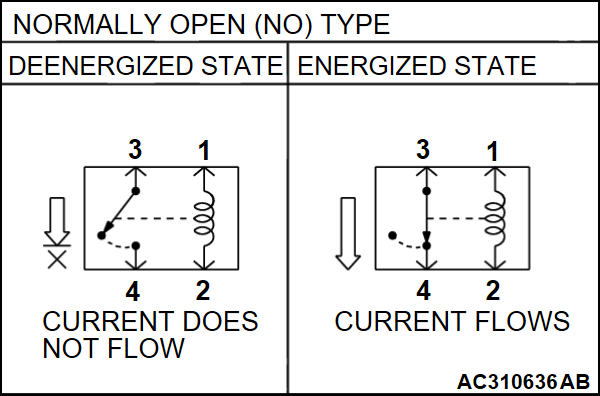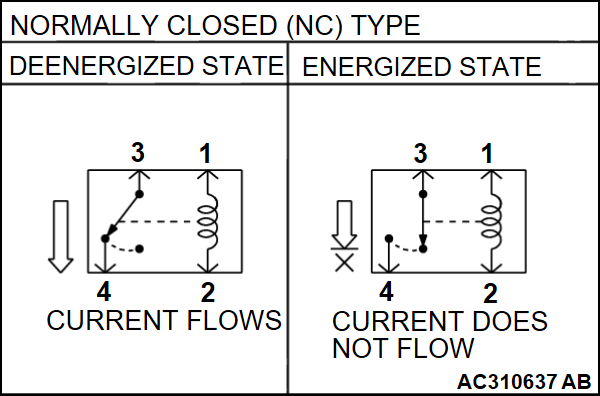CHECKING RELAYS
1. By using a relay, a heavy current can be turned on and off by a switch using much less current. For example, in the circuit shown here, when the switch is turned on (closed), current flows to the coil of the relay. Then, its contact is turned on (closed) and the light comes on. The current flowing through the switch is much less than that for the light.
2. When current flows through the coil of a relay, its core is magnetized to attract the iron piece, closing (ON) the contact at the tip of the iron piece. When the coil current is turned off, the iron piece returns to its original position by a spring, opening the contact (OFF).
3. Relays may be classified as the normally open-type or the normally closed-type, depending on their contact construction.
| note | The deenergized state means that no current is flowing through the coil. The energized state means that current is flowing through the coil. |
(1) The normally open-type
When a normally open relay as illustrated here is checked, there should be no continuity between terminals 3 and 4 when the relay is deenergized. There should be continuity between terminals 3 and 4 when battery voltage and ground are applied to terminals 1 and 2. The relay condition is determined by this check.
| note | Check the relay in both situation which is energized and is not energized. |
(2) The normally closed-type
When a normally closed relay as illustrated here is checked, there should be continuity between terminals 3 and 4 when the relay is deenergized. There should be no continuity between terminals 3 and 4 when battery voltage and ground are applied to terminals 1 and 2. The relay condition is determined by this check.
| note | Check the relay in both situation which is energized and is not energized. |
![[Previous]](../../../buttons/fprev.png)
![[Next]](../../../buttons/fnext.png)



